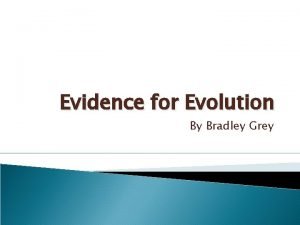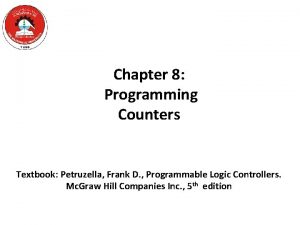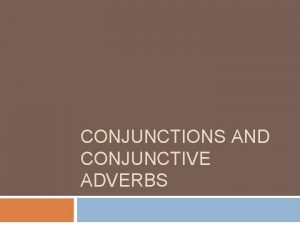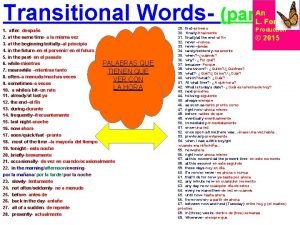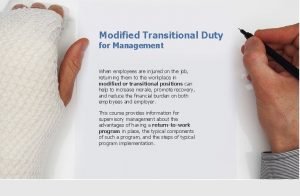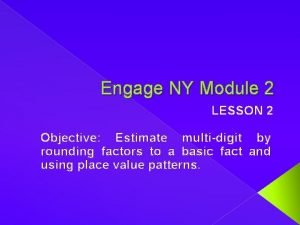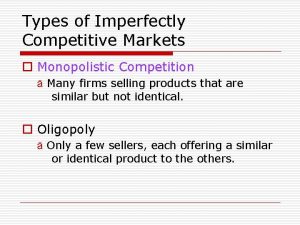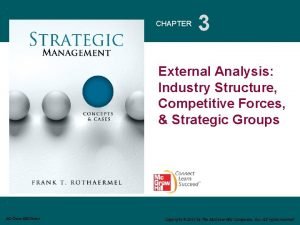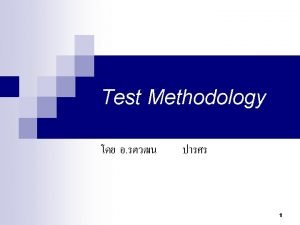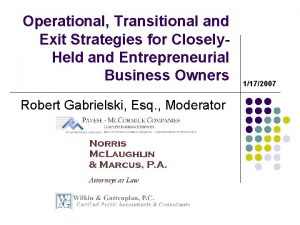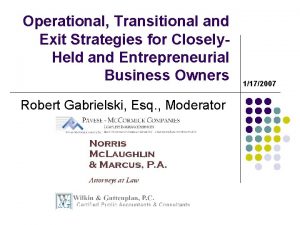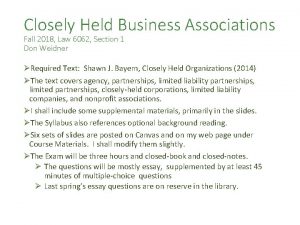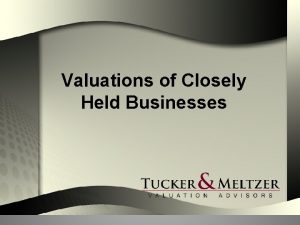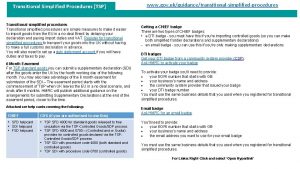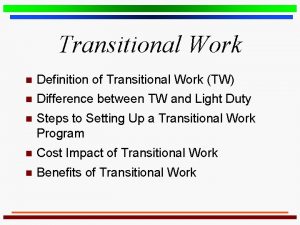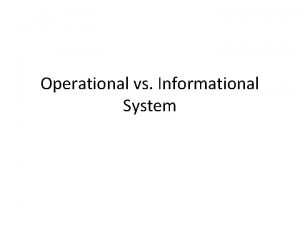Operational Transitional and Exit Strategies for Closely Held










































































- Slides: 74

Operational, Transitional and Exit Strategies for Closely. Held and Entrepreneurial Business Owners Robert Gabrielski, Esq. , Moderator 1/17/2007

Joe Faire

Not Faire

Uma Faire

Well Faire

Boris & Natasha

Business Ownership and Transitions Stefanie Mc. Namara

Laize Faire Software l l Organized as a C-Corporation Choose right entity for transition planning l l l Tax planning Management structure Ownership structure Possibility of providing incentive arrangements Laize Faire may not have been organized as a Ccorp today

Choosing an Entity l Corporation l l l Centralized management Taxation on entity and shareholder level S-Corporation l l Tax election as shareholder pass-through Subject to certain limitations No more than 100 individual shareholders l May only have common stock l

Choosing an Entity – con’t l Limited Liability Company l l Pass-through taxation No personal liability for members Flexibility in structuring management; ownership rights and distribution rights Partnership l l Pass through taxation Personal liability for partners

Negotiating Exit Strategies (Cashing out) l l Plan for exits in buy-sell agreement Provide liquidity of ownership interest Exits may be restricted but cannot completely prohibit transfer Issues to consider in planning transition l l l Voluntary transfer restrictions Address and plan for involuntary transfers Structure different classes of ownership rights (depends on type of entity)

Restrictions on Voluntary Exits l Right of First Refusal l l Put/Call Rights l l l Must offer to other owners and/or company first on same terms and conditions Shareholder’s right to require other shareholders and/or company to buy interest (Put) Company’s right to purchase interest (Call) Tag/Drag Along Rights l Right (Tag-Along) or requirement (Drag-Along) to participation in sale of assets or ownership interest

Address Involuntary Exits l l l Death Disability Retirement Termination for Cause Lien placed on interest (i. e. , bankruptcy) Valuation; terms of payment - may depend on circumstance

Structuring Ownership Rights l l Vehicle to facilitate transition Can have varied rights (i. e. , voting or non) Can be equity, debt and/or combination Can be structured to: l l maintain control obtain preferred return offer incentive compensation provide liquidation or any other preference

Executive Compensation Charles A. Bruder, Esq.

Executive Compensation Planning Considerations Attract new employees l Retain existing “key employees” l Provide employees with a greater sense of involvement in the financial performance of the company l

Executive Compensation Additional Considerations l Succession planning issues l Increased productivity/profitability l l l Financial targets Cash flow planning issues Employment contracts – “golden handcuffs”

Executive Compensation - Equity l Outright grants of stock shares/LLC units l l l Provides the employee with an ownership interest in the company Permits the employee to share in the financial success of the company Can utilize different classes of stock Shareholder dilution/transferability issues Current income taxation

Executive Compensation – Equity l Restricted Shares/LLC Units l l l Addresses transferability issues May result in deferred income tax recognition by the recipient Requires a written agreement between the company and the employee l l Shareholders Agreement Liquidity issues l Buy-back, claw back, employment termination

Executive Compensation – “Phantom Equity” l A bookkeeping entry that provides an “equity like” interest l Value may be determined based upon an underlying equity interest in the company l l Stock Appreciation Rights (“SARs”) Can provide for dividends/distributions Does not provide the plan participant with an ownership interest in the company Liquidity issues

Executive Compensation – Deferred Compensation l Current promise to pay compensation in the future l l l Flexible structure – nonqualified arrangement Company stock/equity can be an “investment” option Easily tied to company financial performance Administrative burdens/liquidity issues Code Section 409 A Funding options

Executive Compensation – Other Equity Arrangements l Stock Options l l Qualified Defined Contribution Retirement Plans l l l Non-qualified and incentive stock options Investment options Matching contributions Employee Stock Ownership Plans (“ESOPs”) l Employee Stock Purchase Plans (“ESPPs”)

Executive Compensation Planning Considerations l l l Who should benefit? What type of benefit should a participant receive? What costs are involved to the sponsoring company? Incentive compensation goals vs. succession planning goals Income tax issues Cash flow maintenance

Tax Minimization William J. Mc. Devitt, CPA, CVA

What taxes are we trying to minimize? l Income tax l l l Ongoing operations Sale of business Estate / Gift tax Sales and Use Import / Export duties ALL OF THEM

Three Rules for Making Effective Business Decisions l l l Decisions should make sense short-term Decisions should position the business for the best chance of long-term success Decisions should be tax-efficient (See three rules of tax planning)

Sale of a Business

What do sellers want? l l Maximum selling price Minimize tax / taxable income

What do buyers want? l l Lowest possible selling price Maximize current tax deductions* * Public companies are generally more interested in maximizing EPS than minimizing taxes

Tax Rates l Federal l l Ordinary Capital gains (long-term) Top Rate 35% 15%

Tax Rates Top Rate l l AMT – Capital gains (long-term) 28% 15%

Tax Rates l State l New Jersey Top Rate 8. 97% Note: State taxes are not deductible when subject to AMT

What are you selling? l l Stock / Partnership / Interest Asset Sale

Purchase Price Allocation l What is good for sellers may not be good for the buyer

Allocate to: Sellers Buyers Stock (corp. ) Capital gains No tax write-off P-ship interest (includes LLC) Generally capital Step up assets gains Asset Sale Generally capital Step up assets gains (*C-Corp trap) Compensation Ordinary plus FICA or SE Deductible

Worst Case C-Corp Asset Sale Assume selling price $92, 000 C-Corp tax (40%) – 36, 800, 000 Proceeds to seller $ 55, 200, 000 Individual tax (24%) – 13, 248, 000 Net after tax to seller $ 41, 952, 000 Tax cost ≈ 55%

New Businesses Generally should be l Partnerships for tax reasons l Corporate protection for legal reasons “LLC”

Traps Allocation of purchase price to: l l Ongoing consultation Good for buyer Bad for seller

Business Valuation Issues

Why do you value a business? l l Buy/sell agreements Possible sale Estate/Gift Litigation

How do you value a business? l l Depends on the purpose However basic, the concepts are the same

How do you value a house? l l Comparables Correlate to subject house

With a business valuation, there is less reliable information available on the sales of other businesses

Case Study One l Cardboard box l l l Every Monday the box generates $100 (except for two weeks of summer) The box has followed this pattern for the last 50 years The box is expected to continue this path for the next 50 years

What would you pay for the box?

Case Study Two l Cardboard box l l l Every Monday the box requires a deposit of $100 (no summer vacation) The box has followed this pattern for the last three years The expectation is that the box now contains the next big thing in the industry

What would you pay for the box?

Discounts for Lack of Control and Lack of Marketability l l If Boris is to get a 10% interest Subject to numerous restrictions l l l Transferability Voting Rights Etc.

Discounts for Lack of Control and Lack of Marketability l l Then the value of the 10% is not $9. 2 million (10% of $92 million) It is worth less than $9. 2 million

Financial Strategies for Business Owners Patrick Sheridan

Where Are You Now? l The Business Cycle: Time Survival Growth Maturity Planned Transfer No Plan

Ownership Of Company l l l Joe Cab Uma 85% 10% 5% 100%

What Could Get in the Way? l Owner (s) / Key Person (s) Disability Ø Death Ø

Buy-Sell Agreement l l l Who are the potential buyers? If Joe sells company to Boris? After Joe dies who buys the company ?

l 10 yr Installment note $85, 000 @ 6% annual payment $11, 000 l Life Insurance policy for $85, 000 annual premium $2, 250, 000

Salary Continuation l Agreement between company and employee covering retirement and death

Key Person - Equation l Management l Talent / Capital = Return Money Rates

Protecting Your Company’s Assets Through Confidential, Non-Compete and Invention Agreements Patrick T. Collins, Esq.

Business Value/Employment Contracts l l l Do they exist? What are their terms? Are they enforceable?

The Basics l What is an employer’s protectable interest and how is that defined? l l l Customer relationships Confidential business information Trade Secrets

To What Specific Information Have Courts Granted Protection? l l Scientific data, chemical processes, manufacturing methods Business information-marketing plans, pricing policies, financial information Computer programs/data compilation Client lists, needs, preferences and/or contacts

“Trade Secret” Status Will Not Be Provided To l l The general skills/experience an employee acquires over time Specialized skills, experience, contacts which an employee had prior to working for an employer

Factors In Determining Whether Information Is Proprietary 1) 2) 3) 4) 5) 6) The extent to which the information is known outside of the owner’s business; The extent to which it is known by employees and others involved in the owner’s business; The extent of measures taken by the owner to guard the secrecy of the information; The value of the information to the owner and his competitors; The amount of effort or money expended by the owner in developing the information; The ease or difficulty with which the information could be properly acquired or duplicated by others.

Missing Information l l When did Boris sign the Agreement? Where was it signed? How long are the restrictions? What are the restrictions? l l l Geographic Customer Based Blue Pencil States?

“Work-For-Hire” Agreements The General Rule: l Inventions belong to the inventor-the person who conceived, developed and perfected it Exceptions: l l Employees hired to invent Specific contractual arrangements

Employment for Purpose of Inventing l Definition: Employee who is hired for purpose of inventing and who succeeds in accomplishing task during employment must assign to employer all rights to the invention. l l l Invention must be developed during period of employment Express agreement on scope of employment should be present Place where invention created generally not determinative

Shop Rights l l l Invention made by employee during working hours using employer’s materials and equipment provides employer with irrevocable but non-exclusive right to use of invention. Employer does not obtain a shop right where idea was originated and fully developed by employee at home and not using material or labor of employer. Shop right is personal and exclusive to employer. Cannot be assigned or transferred by employer to third party.

Written Agreements l l Consideration (Employment/Continued Employment) Permissible Scope - Generally Courts will not enforce agreements that unreasonably obligate an employee to transfer ownership rights in each and every instance.

Typical Contract Language l The employee agrees to assign all inventions except those for which no equipment, supplies, facilities or trade secrets of employer was used and which was developed on employee’s own time unless (i) invention relates to business of employer or (ii) invention results from work performed for employer.

What Happens If Boris Leaves? l l Why/How did Boris leave? Holdover invention agreement - Generally must be limited to a reasonable time and to subject matter which employee worked on or had knowledge of during employment

Miscellaneous Issues l l l Successor/Assignability Liquidated Damages Forfeiture for Violation

The Corporate Opportunity Doctrine 1. 2. 3. 4. A corporate opportunity is presented to an employee; The company can undertake it financially; It falls within the company’s normal business; The company has an interest/expectancy in such opportunities.

Q&A

Thank you. Please fill out our seminar evaluation form.
 Egress diagonal rule
Egress diagonal rule Exit exit access and exit discharge
Exit exit access and exit discharge Closely held corporation def
Closely held corporation def Urolith
Urolith Transition for thesis statement
Transition for thesis statement Transitional words
Transitional words Transitional fossils
Transitional fossils Simple columnar epithelium
Simple columnar epithelium Thor approved programs
Thor approved programs Transitional signals
Transitional signals Dynamic postural assessment: pushing
Dynamic postural assessment: pushing Overhead squat
Overhead squat Stratified columnar
Stratified columnar Form in hair design
Form in hair design Fibrocartilage function
Fibrocartilage function Transitional medical assistance ohio
Transitional medical assistance ohio There are no transitional fossils fact, fiction or opinion
There are no transitional fossils fact, fiction or opinion Transitional epithelium
Transitional epithelium Simple squamos
Simple squamos Chapter 3 section 3 aquatic ecosystems
Chapter 3 section 3 aquatic ecosystems Transition example
Transition example A one-shot, or transitional, contact:
A one-shot, or transitional, contact: Torrance memorial outpatient lab
Torrance memorial outpatient lab Transitional epithelium
Transitional epithelium Conjunctive adverbs vs coordinating conjunctions
Conjunctive adverbs vs coordinating conjunctions Transitional expressions
Transitional expressions Transitional expressions
Transitional expressions Transitional epithelium layers
Transitional epithelium layers What tissue is this
What tissue is this Halimbawa ng pangungusap na patanong
Halimbawa ng pangungusap na patanong Columnar epithelium tissue function
Columnar epithelium tissue function Goblet cell
Goblet cell Casa grande transitional housing
Casa grande transitional housing Transitional duty
Transitional duty Functions of transitional epithelium
Functions of transitional epithelium Urine infection symptoms
Urine infection symptoms General statement
General statement Transitional math illinois
Transitional math illinois Function of skeletal muscle
Function of skeletal muscle Look and answer the questions.
Look and answer the questions. Why are most roadways crowned
Why are most roadways crowned Bullet holes through glass
Bullet holes through glass Lesson 2 round to estimate products
Lesson 2 round to estimate products Fork() wait() exec() and exit() system calls
Fork() wait() exec() and exit() system calls 456x42
456x42 How to find excess capacity on a graph
How to find excess capacity on a graph Free entry and exit
Free entry and exit Free entry and exit
Free entry and exit Free entry and exit
Free entry and exit Free entry and exit
Free entry and exit Free entry and exit
Free entry and exit Process n
Process n Kontinuitetshantering
Kontinuitetshantering Novell typiska drag
Novell typiska drag Nationell inriktning för artificiell intelligens
Nationell inriktning för artificiell intelligens Returpilarna
Returpilarna Varför kallas perioden 1918-1939 för mellankrigstiden
Varför kallas perioden 1918-1939 för mellankrigstiden En lathund för arbete med kontinuitetshantering
En lathund för arbete med kontinuitetshantering Kassaregister ideell förening
Kassaregister ideell förening Tidbok
Tidbok A gastrica
A gastrica Vad är densitet
Vad är densitet Datorkunskap för nybörjare
Datorkunskap för nybörjare Stig kerman
Stig kerman Tes debattartikel
Tes debattartikel För och nackdelar med firo
För och nackdelar med firo Nyckelkompetenser för livslångt lärande
Nyckelkompetenser för livslångt lärande Påbyggnader för flakfordon
Påbyggnader för flakfordon Vätsketryck formel
Vätsketryck formel Offentlig förvaltning
Offentlig förvaltning Jag har gått inunder stjärnor text
Jag har gått inunder stjärnor text Presentera för publik crossboss
Presentera för publik crossboss Argument för teckenspråk som minoritetsspråk
Argument för teckenspråk som minoritetsspråk Vem räknas som jude
Vem räknas som jude Klassificeringsstruktur för kommunala verksamheter
Klassificeringsstruktur för kommunala verksamheter






